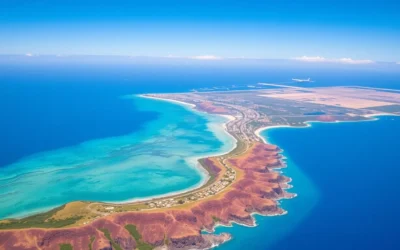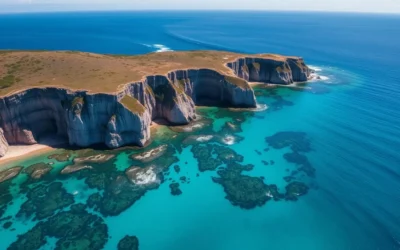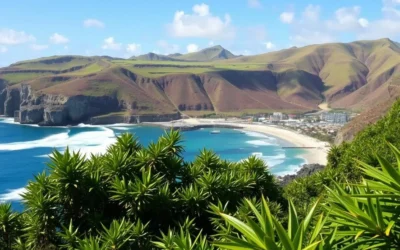✓ Accommodations✓ Flights✓ Rental Cars
Niue, a small island country in free association with New Zealand, boasts a rich cultural and linguistic heritage. This self-governing nation is home to a unique bilingual dynamic, where both Niuean and English play significant roles in daily life.
With a population of around 1,900, Niue’s inhabitants take pride in preserving their native tongue. The Niuean language, classified as Definitely Endangered by UNESCO, remains a cornerstone of the island’s identity. Despite its small size, the country’s government actively promotes its language through policies and tourism initiatives.
Niue’s connection to New Zealand is strong, with approximately 70% of Niuean speakers residing there. This relationship has influenced the island’s linguistic landscape, creating a blend of tradition and modernity. As you explore Niue’s language heritage, you’ll discover how it shapes the island’s culture and governance.
Introduction to Niue’s Linguistic Heritage
The linguistic heritage of this South Pacific island is deeply rooted in its history and culture. Over centuries, the island’s language has evolved through interactions with neighboring regions and external influences. Today, it stands as a symbol of identity and tradition for its inhabitants.
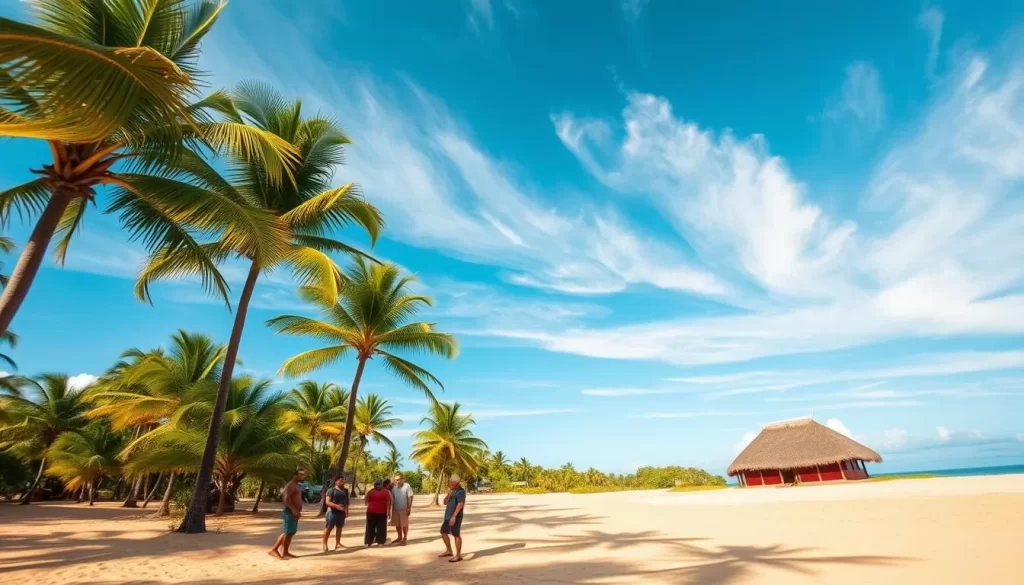
Historical Background and Settlement
The island’s story begins with Polynesian voyagers who arrived from Samoa and Tonga. These early settlers brought their languages and customs, which became the foundation of the island’s culture. Later, European explorers like James Cook arrived, naming the island “Savage Island” due to initial conflicts with the locals.
Missionary work in the 19th century introduced new words and ideas, blending with the existing linguistic traditions. This mix of influences created a unique language that reflects the island’s diverse history.
Cultural Significance of Language on the Island
Language is more than just a means of communication here. It carries the stories, traditions, and values of the island’s people. From formal ceremonies to everyday conversations, the language connects inhabitants to their past and future.
External influences, such as those from the Cook Islands and New Zealand, have also played a role. These interactions have enriched the island’s vocabulary and strengthened its cultural ties.
Today, the language remains a vital part of the island’s identity. Efforts by the government and local communities ensure its preservation for future generations.
Niue: Official and widely spoken languages
The bilingual landscape of this island nation reflects its unique cultural identity. Both Niuean and English hold official status, shaping the way people communicate in public and private life. This dual-language system is a testament to the island’s history and its ties to New Zealand.

Official Status and Bilingual Dynamics
Niuean is legally recognized as the primary language, with English serving as a secondary official language. This setup ensures that both languages are used in government, education, and media. For example, public announcements and legal documents are often available in both languages.
The influence of the Cook Islands and early missionary work has left a lasting mark on the island’s vocabulary. Words and phrases from these interactions have enriched the language, creating a unique linguistic blend.
Government policies actively promote bilingualism. Schools teach both languages, and cultural programs encourage their use in daily life. This approach helps preserve the island’s heritage while embracing modern communication needs.
Over time, certain terms have evolved. For instance, the island’s initial label as Savage Island has been replaced by its indigenous name, reflecting a shift in cultural awareness. These changes highlight the dynamic nature of language and its role in shaping identity.
“Language is the road map of a culture. It tells you where its people come from and where they are going.”
In essence, the island’s linguistic framework is more than just a means of communication. It’s a vital part of its national identity, connecting people to their past and guiding them into the future.
Understanding the Niuean Language Structure
Exploring the structure of the Niuean language reveals its unique linguistic patterns. This language is deeply tied to the island’s culture and history, offering a window into its identity. Let’s dive into its dialects, phonology, and reduplication patterns to understand its richness.
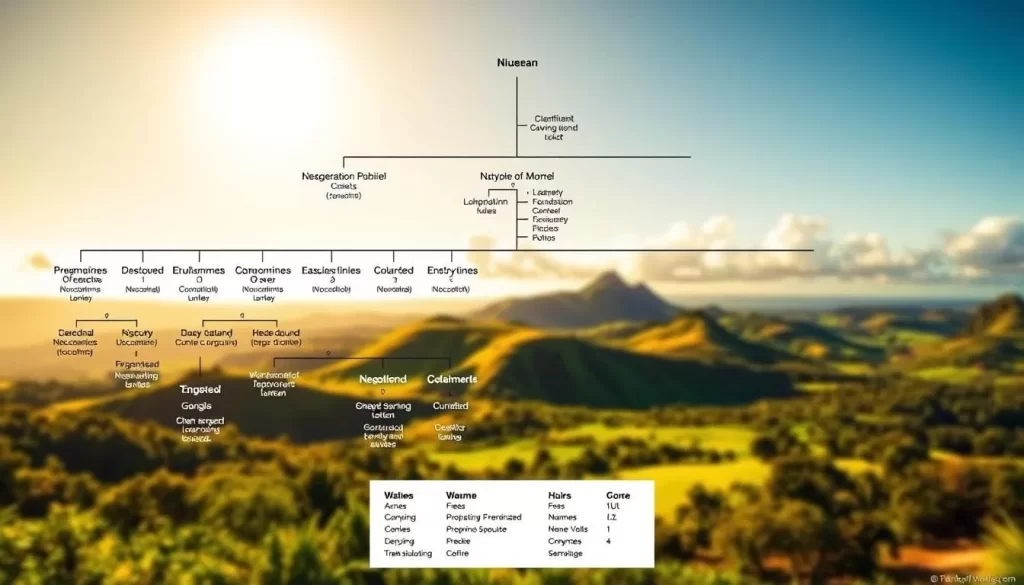
Dialects and Variations Across Regions
The Niuean language has two main dialects: Motu and Tafiti. These dialects reflect regional differences and historical influences. For example, Motu is spoken in the northern part of the island, while Tafiti is common in the south.
Missionary work in the 19th century played a role in shaping these dialects. Words and phrases introduced during this time became integrated into daily speech. Today, these variations highlight the island’s diverse linguistic heritage.
Phonological Aspects and Reduplication Patterns
Niuean phonology is marked by distinctive features like vowel length and consonant usage. Vowels can be short or long, changing the meaning of words. For instance, the word faka (prefix) is often used to introduce causation.
Reduplication is another key aspect. This process involves repeating parts of a word to convey emphasis or plurality. It’s a common feature in Polynesian languages and adds depth to Niuean’s structure.
Here are some examples of reduplication in action:
- Faka-faka: Used to intensify meaning.
- Lolo-lolo: Indicates repetition or frequency.
These patterns show how the language’s form reflects its cultural nuances.
In summary, the Niuean language’s structure is a blend of history, culture, and phonology. Its dialects and reduplication patterns offer a glimpse into the island’s rich linguistic heritage. By understanding these features, you gain a deeper appreciation for its role in shaping identity.
The Impact of Missionary Work on Niuean Language
Missionary work in the 19th century left a lasting mark on the linguistic and cultural fabric of this Pacific island. The arrival of missionaries brought significant changes, transforming not only religious practices but also the way people communicated.
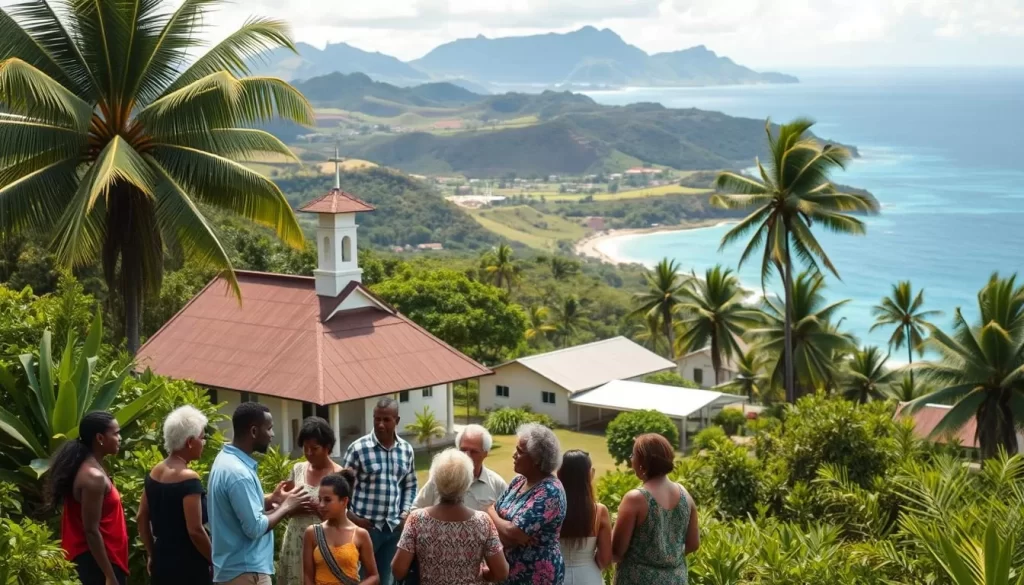
One of the key figures in this transformation was Nukai Peniamina, the first Niuean to convert to Christianity. His efforts, alongside those of missionaries from New Zealand, played a pivotal role in spreading Christianity and standardizing the local language.
Early Missionary Influence and Conversion
Missionaries introduced new words and phrases, many of which were tied to religious practices. For example, terms like ekalesia (church) and lotu (prayer) became integral to daily life. These additions enriched the Polynesian language, blending traditional elements with new ideas.
Language became a tool for social change. Missionaries used it to teach literacy, enabling locals to read religious texts. This shift not only facilitated religious conversion but also empowered individuals to engage more deeply with their culture and traditions.
Here’s a table showing key vocabulary changes introduced by missionaries:
| Traditional Word | Missionary-Influenced Word | Meaning |
|---|---|---|
| Faka | Ekalesia | Church |
| Tapu | Lotu | Prayer |
| Atua | Tupuaga | God |
The interplay between faith, language, and culture reshaped the island’s identity. Over time, these changes became deeply embedded in the Niuean language, reflecting a unique blend of tradition and external influence.
Today, the legacy of missionary work remains evident in the island’s linguistic and cultural practices. It serves as a reminder of how language can be a powerful force for transformation.
Preserving and Promoting Niuean in the Digital Age
Modern technology is transforming how endangered languages are revitalized. In this digital era, innovative strategies are ensuring the survival of indigenous languages like Niuean. The fusion of technology and education is reshaping language preservation, offering new hope for cultural heritage.
Revitalization Strategies and Education Initiatives
The government has taken proactive steps to preserve Niuean. Education initiatives focus on teaching the language in schools, ensuring younger generations stay connected to their roots. Online resources, such as digitized archives, provide access to traditional texts and recordings.
Social media platforms are also playing a key role. Campaigns on Facebook and Instagram encourage the use of Niuean in everyday conversations. These efforts are supported by the free association with New Zealand, which provides funding and technical expertise.
Here’s a table showcasing recent digital projects aimed at language preservation:
| Project | Description | Impact |
|---|---|---|
| Digitized Archives | Conversion of traditional texts into digital formats. | Increased accessibility for learners worldwide. |
| Social Media Campaigns | Promoting Niuean through interactive posts. | Engaging younger audiences. |
| Online Courses | Language lessons available on dedicated platforms. | Facilitating self-paced learning. |
These initiatives highlight how technology and education converge to secure the future of Niuean linguistic heritage. By leveraging digital tools, the language is not only preserved but also celebrated on a global stage.
For more insights on how technology aids cultural connections, explore this study on digital inclusion during the COVID-19 pandemic. It emphasizes the importance of technology in maintaining cultural ties and relationships in a changing world.
Cultural and Political Connections with New Zealand
Niue’s political ties with New Zealand play a pivotal role in shaping its bilingual environment. As a self-governing nation in free association with New Zealand, Niue benefits from a unique relationship that influences its language policies and daily communication.
The collaboration between the two governments ensures that both Niuean and English are used in public services and education. This partnership strengthens the island’s linguistic diversity while preserving its cultural heritage.
Bilingualism in Government and Daily Life
In Niue, bilingualism is more than a policy—it’s a way of life. The government actively promotes the use of both languages in official documents and public announcements. This approach ensures that every citizen, regardless of their primary language, can access essential services.
Local villages also play a key role in maintaining this bilingual environment. Cultural practices, such as traditional ceremonies and community gatherings, often incorporate both languages. This blend of tradition and modernity keeps the linguistic heritage alive.
Here’s a table highlighting key aspects of Niue’s bilingual policies:
| Aspect | Description | Impact |
|---|---|---|
| Government Documents | Available in both Niuean and English. | Ensures accessibility for all citizens. |
| Education System | Teaches both languages in schools. | Prepares students for a bilingual world. |
| Community Practices | Incorporates both languages in traditions. | Strengthens cultural identity. |
Niue’s free association with New Zealand also supports its bilingual efforts. Through funding and technical expertise, New Zealand helps sustain these initiatives, ensuring their long-term success. For more insights into New Zealand’s linguistic diversity, explore this resource.
In essence, Niue’s bilingual environment is a testament to its strong political and cultural connections with New Zealand. These ties not only preserve the island’s heritage but also prepare its people for a globalized world.
Comparative Insights: Niuean and Other Polynesian Languages
The Niuean language shares fascinating connections with other Polynesian languages, revealing both common roots and unique traits. By comparing it to Tongan, Samoan, and dialects from the Cook Islands, you can better appreciate its place in the Polynesian family.
Similarities with Tongan, Samoan, and Cook Islands Dialects
Niuean and Tongan are the only two members of the Tongic subgroup of the Polynesian family. This close relationship means they share many phonological and lexical features. For example, both languages retain certain syntactic structures that are absent in other Polynesian languages.
When compared to Samoan, Niuean shows about 60% lexical similarity. This indicates a shared heritage, though each language has evolved independently over time. Similarly, dialects from the Cook Islands share vocabulary and grammatical patterns with Niuean, reflecting their common ancestry.
Distinctive Linguistic Features of Niuean
Despite these similarities, Niuean has unique features that set it apart. For instance, its phonological system includes vowel length distinctions, which can change the meaning of a word. This feature is less prominent in Tongan and Samoan.
Another distinctive aspect is its use of reduplication. This process, where parts of a word are repeated, is common in Polynesian languages but takes on unique forms in Niuean. For example, the word faka-faka is used to intensify meaning, a pattern not found in Tongan.
Niuean also exhibits syntactic features that are prominent in Eastern Polynesian languages but absent in Tongan. This divergence highlights its unique development within the Polynesian family.
“Language is a reflection of history, and Niuean’s structure tells a story of both shared heritage and individuality.”
For more insights into the grammatical features of Niuean English, explore this study. Additionally, learn about Pseudo Noun Incorporation in Niuean, a unique syntactic phenomenon.
Language, Identity, and the Future of Niue
Language is the heartbeat of identity, shaping how communities connect and thrive. For residents of this Pacific island, their native tongue is more than a means of communication—it’s a reflection of heritage and pride. This connection to language is deeply interwoven with cultural expression and national identity.
Community Engagement and Cultural Expression
Community initiatives play a vital role in preserving linguistic heritage. Local events, such as festivals and workshops, encourage the use of the native language in everyday life. These efforts are supported by the government niue, which promotes cultural programs to ensure the language remains vibrant.
Personal stories highlight the pride residents take in their linguistic roots. For example, Rosa Kalauni has been teaching the language since the early 1990s, inspiring younger generations to embrace their heritage. Such dedication underscores the importance of community engagement in language preservation.
National Institutions and Language Preservation
National institutions, including the legislative assembly, actively support language revitalization. Policies are in place to ensure the language is taught in schools and used in official documents. This commitment reflects the island’s dedication to preserving its cultural identity.
The free association new model with New Zealand further strengthens these efforts. This partnership provides resources and expertise, ensuring the language thrives both locally and in the diaspora.
“Language is the soul of a people, carrying their history and dreams into the future.”
Looking Ahead: The Future of Language
Continuous change shapes the future of the island’s linguistic heritage. As technology evolves, so do opportunities for language preservation. Online platforms and social media campaigns are engaging younger audiences, ensuring the language remains relevant in a digital age.
Here’s a table summarizing key initiatives supporting language preservation:
| Initiative | Description | Impact |
|---|---|---|
| Community Workshops | Interactive sessions to teach the language. | Encourages everyday use among residents. |
| Government Policies | Promotes bilingual education and official use. | Ensures institutional support for the language. |
| Digital Campaigns | Social media and online resources. | Engages younger generations globally. |
In essence, language is more than a tool for communication—it’s a bridge to the past and a guide to the future. Through community engagement, institutional support, and innovative strategies, the island ensures its linguistic heritage remains a source of pride for generations to come.
Conclusion
Niue’s linguistic heritage is a cornerstone of its national identity. As a self-governing state in free association with New Zealand, the island balances tradition and modernity. Historical influences, from colonial encounters to missionary work, have shaped its unique language landscape.
Today, the government actively promotes bilingualism, ensuring both Niuean and English thrive. Initiatives in tourism and digital platforms are preserving this heritage for future generations. These efforts highlight the island’s commitment to cultural preservation.
Explore more about Niue’s journey in addressing climate change and its cultural resilience in this resource. Share this insight to support the island’s vibrant linguistic legacy.
The above is subject to change.
Check back often to TRAVEL.COM for the latest travel tips and deals.

